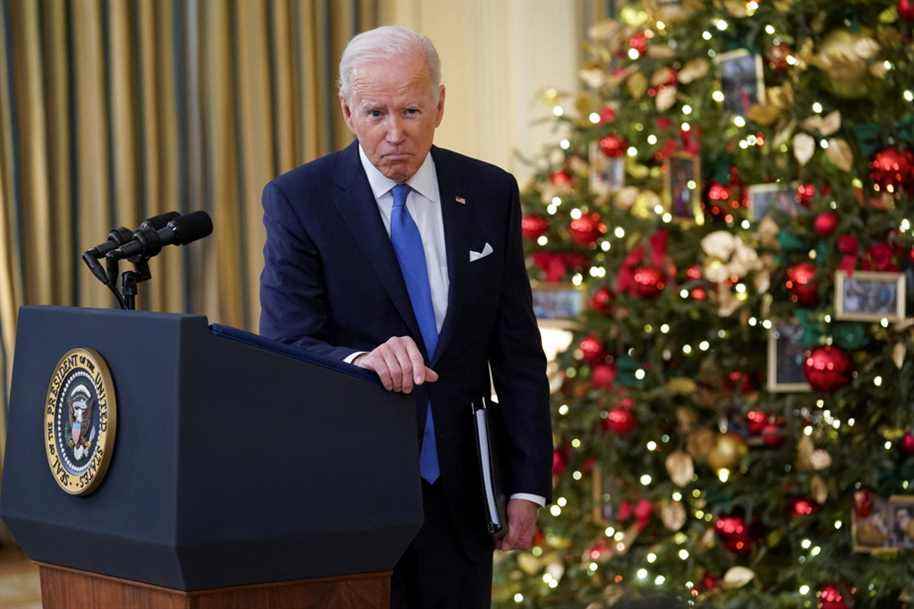In November 2020, Democrat Joe Biden won a decisive victory in the United States over incumbent President Donald Trump. And this, despite President Trump’s lack of concessions and his efforts to cast doubt on the results of the poll in the courts.
We know the rest. Trump encouraged his most radical supporters to challenge this election within the very walls of Congress in Washington on January 6. The violence that followed was described as an “apprehended insurgency”. The investigation into these events is continuing.
In the first months of its mandate, the Biden-Harris administration succeeded in imposing its political program. Vaccination against COVID-19 has accelerated, economic growth has gained momentum, and a post-pandemic recovery plan (of nearly US $ 2 trillion) has been adopted by Congress.
Internationally, the US administration has re-established a tone of conciliation with its allies and institutions. The virtual Biden-Trudeau summit on February 23 began this process.
So much so that, six months after entering the White House, President Biden had the wind in his sails. Its average approval rating was 55%, and the pandemic indicators were encouraging. In short, a good start, despite a political climate still split between Democrats and Republicans.
The tide turned for the Biden-Harris administration in August. The hasty – and deemed unsuccessful – withdrawal of US troops from Afghanistan was a game-changer. Allies and potential refugees were taken aback by President Biden’s decision that took effect on August 31. Even today, its repercussions are felt.
Since then, other challenges have emerged. The arrival of the Delta and Omicron variants has brought the pandemic back to the top of the agenda. Winter promises to be difficult …
The rate of inflation, the highest since the 1990s, is also being felt in American households. The result: the Biden-Harris administration now has an average satisfaction rate of 45%. Only Donald Trump had such a low score in a first term on the eve of the midterm elections. This does not bode well for Joe Biden as this electoral meeting approaches, next November.
Outlook 2022
Meanwhile, economic growth is holding steady, the unemployment rate is at an all-time low (4.2%) and the stock markets continue to perform. Despite everything, inflation does not seem to want to run out of steam in the short term and the problems related to supply chains remain unresolved, despite the President’s encouraging remarks. The meteoric rise of the Omicron variant also threatens economic recovery.
Joe Biden’s ambitious legislative program also meets with dissension within his party. The priority project Build Back Better (a social and economic infrastructure plan that includes health and environmental measures) is met with resistance from Senators Joe Manchin, of West Virginia, and Kristen Sinema, of Arizona.
This division between moderate Democrats and progressives will continue into 2022.
On the foreign policy front, the future does not look much brighter. The Afghanistan entanglement will continue to dominate the news as the Taliban government asserts itself on the ground with brutality and uncertainty reigns over the future of future refugees. The worsening humanitarian crisis is also likely to make headlines in the coming months.
Russia under Putin continues to increase its threats on the border with Ukraine. The possible invasion of the territory will undoubtedly represent a challenge for NATO and the American allies.
China’s threat to Taiwan and the recent American failure to revive the Iran nuclear deal will add to the concerns facing the Biden-Harris administration.
But the next few months are not entirely dark for President Biden. Positive effects of its infrastructure program, adopted in November thanks to the support of a dozen Republican senators, are to be expected. It will also continue its efforts to put forward the initiatives resulting from two world summits, the COP26 on climate change and the one on democracy bringing together more than a hundred countries.
President Biden and Senator Manchin can also be expected to find common ground on the plan. Build Back Better.
But we have to admit that year two of Joe Biden’s presidency does not look much easier than his first year in the White House.

